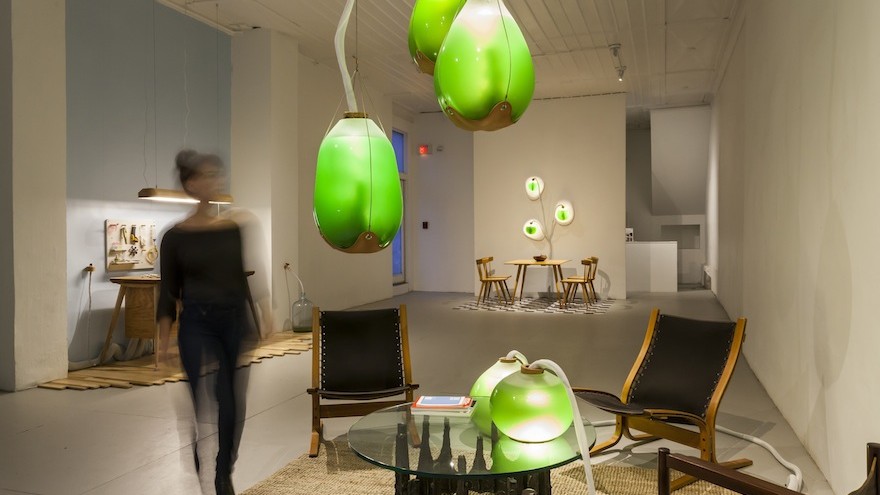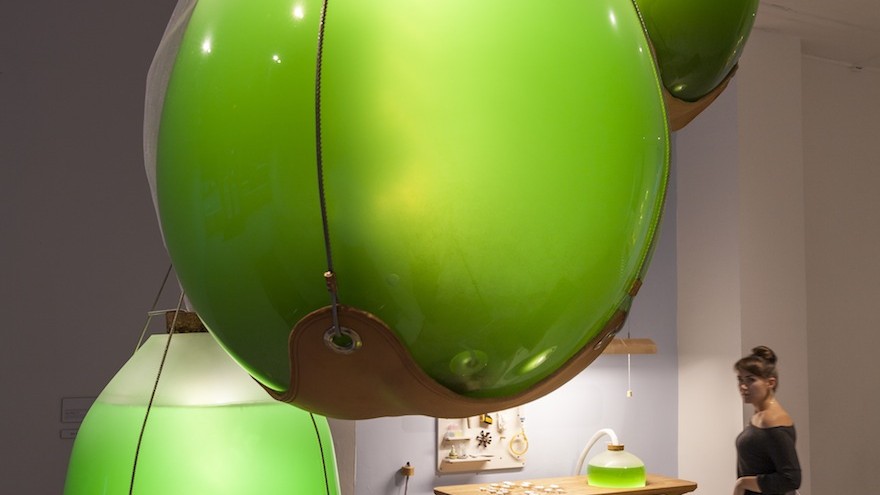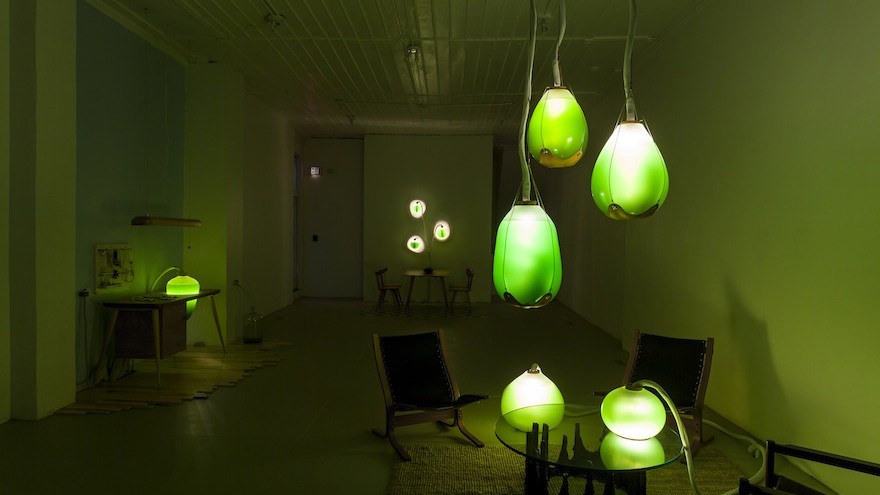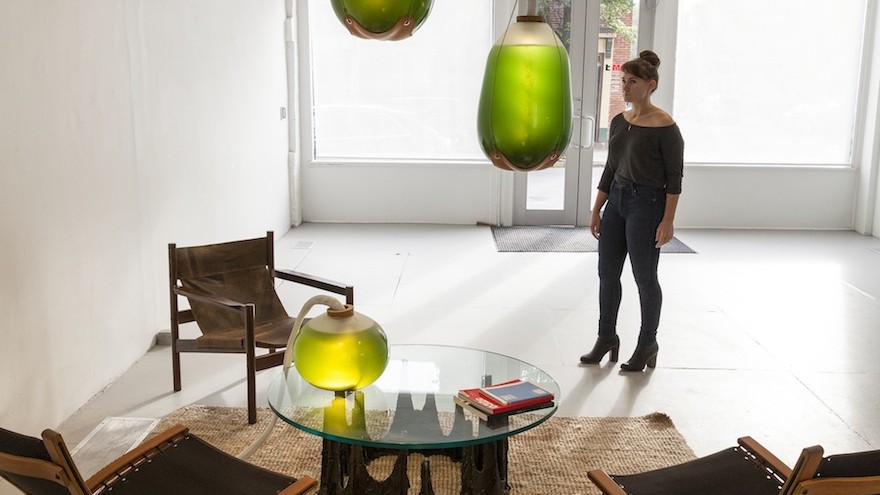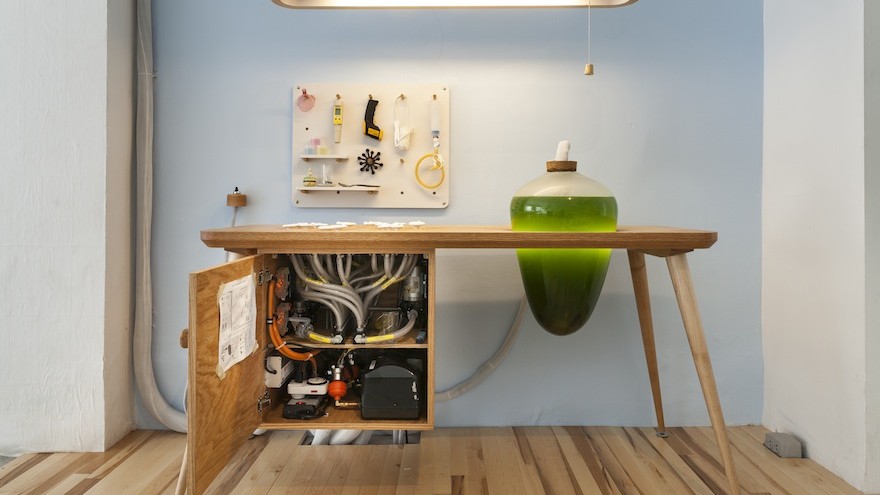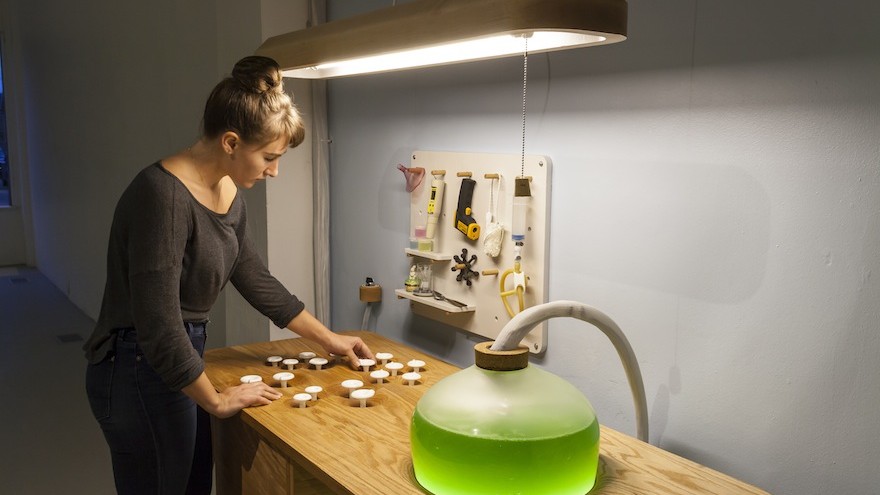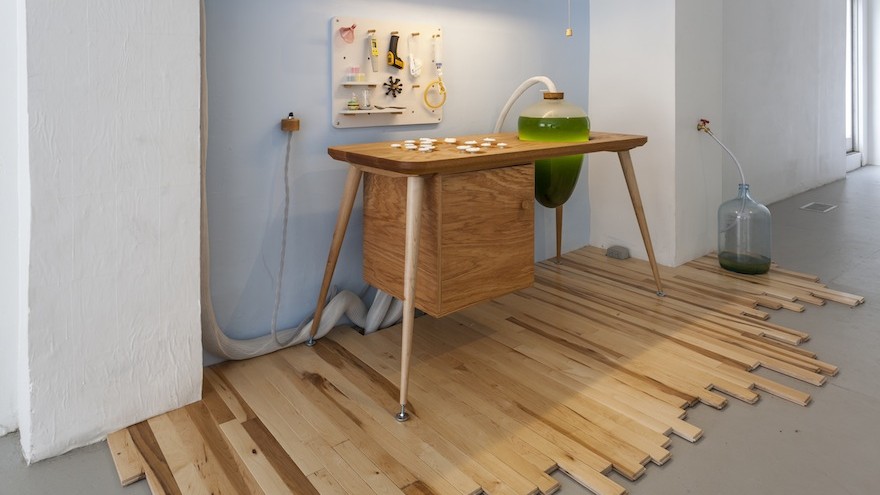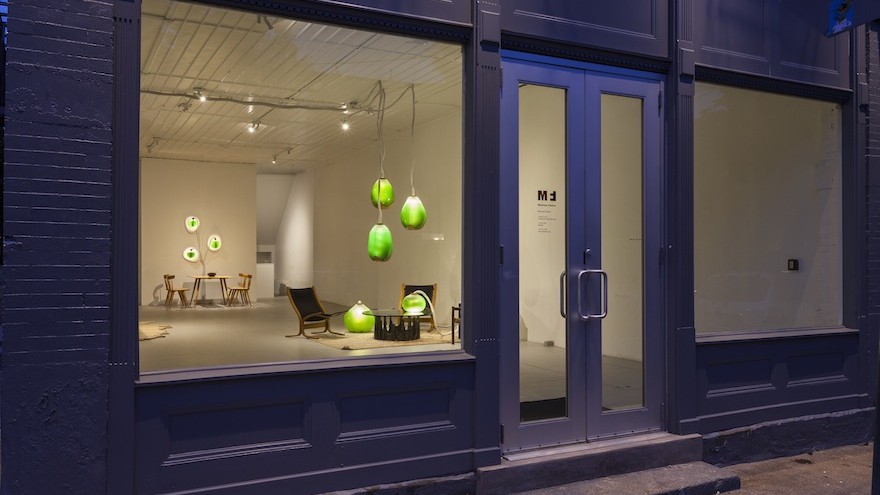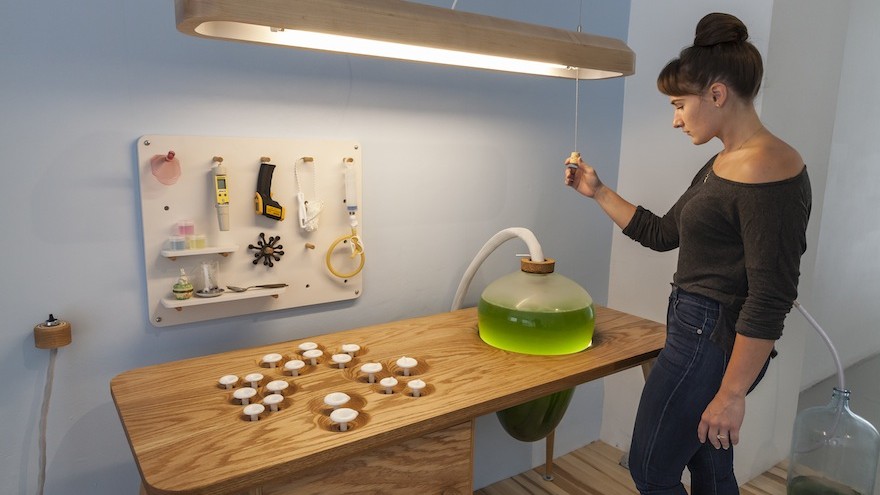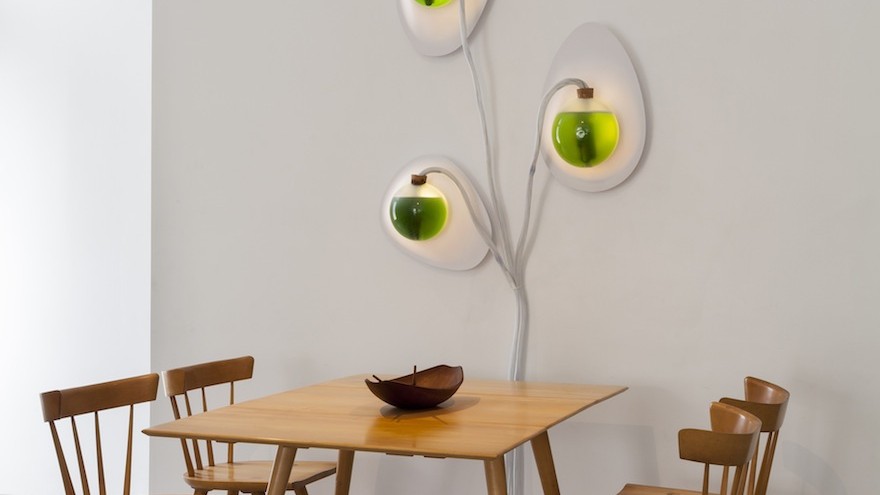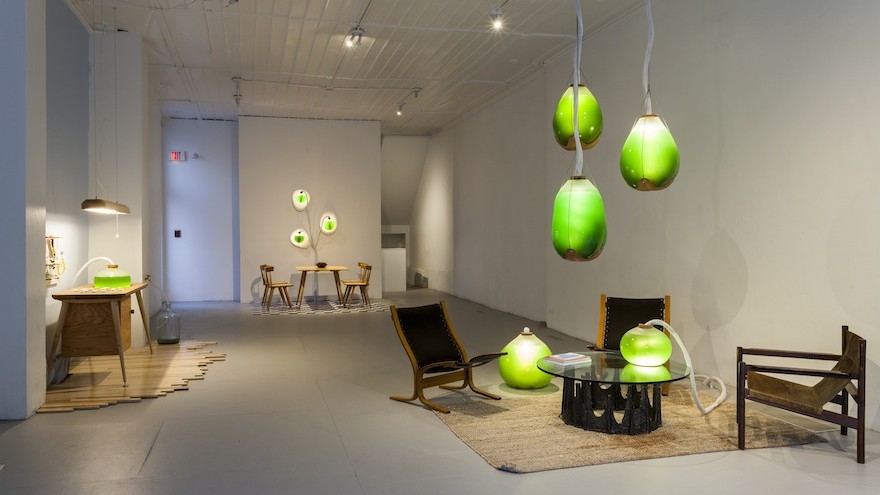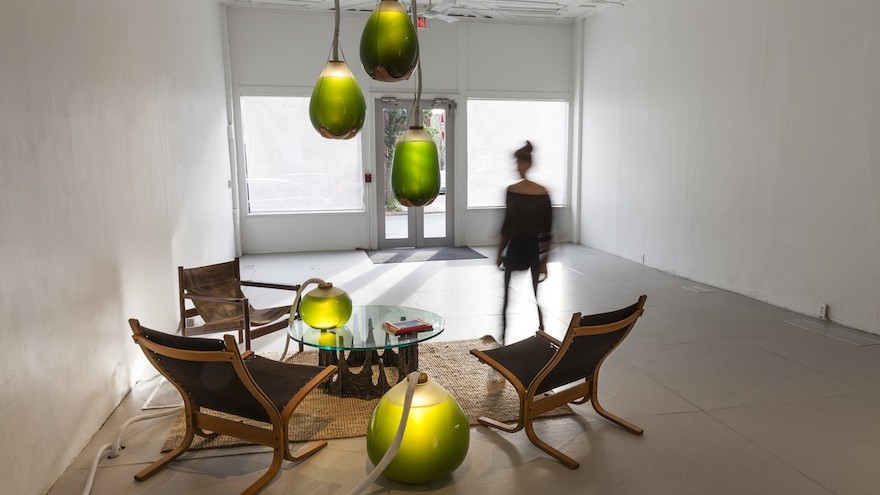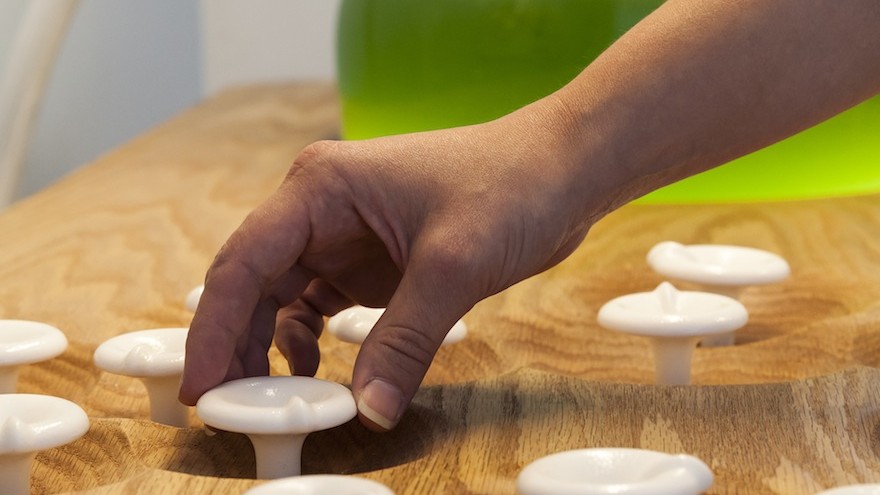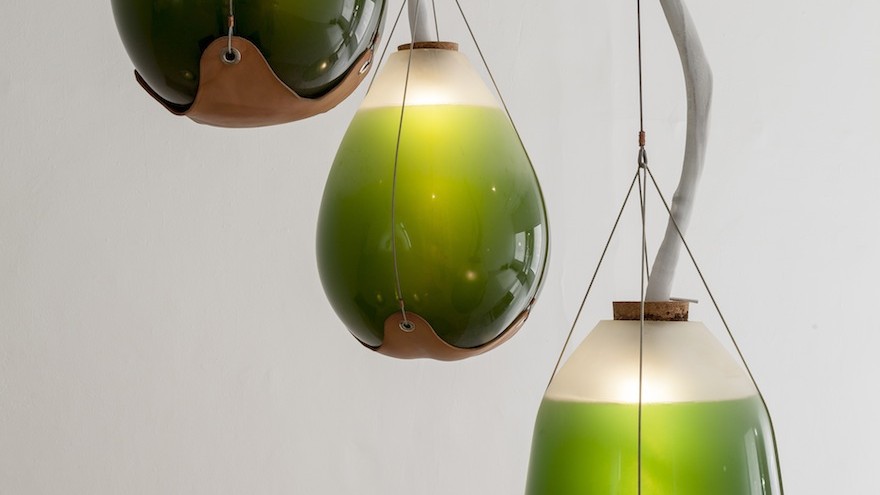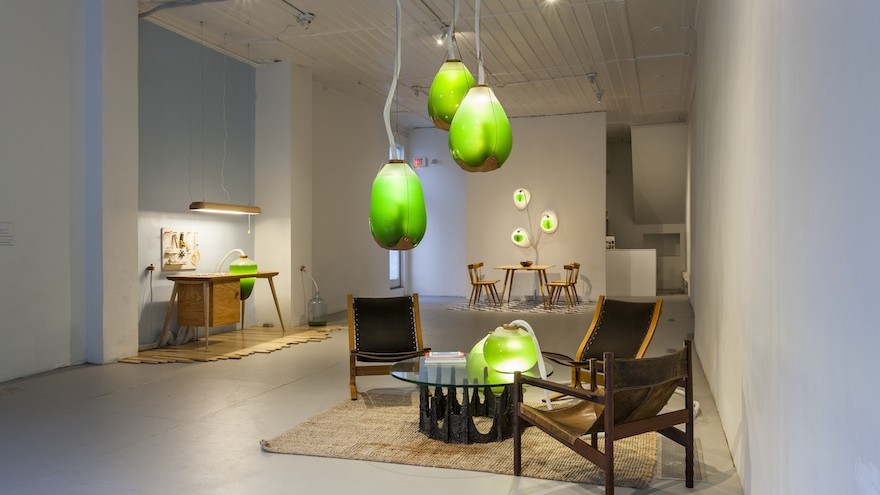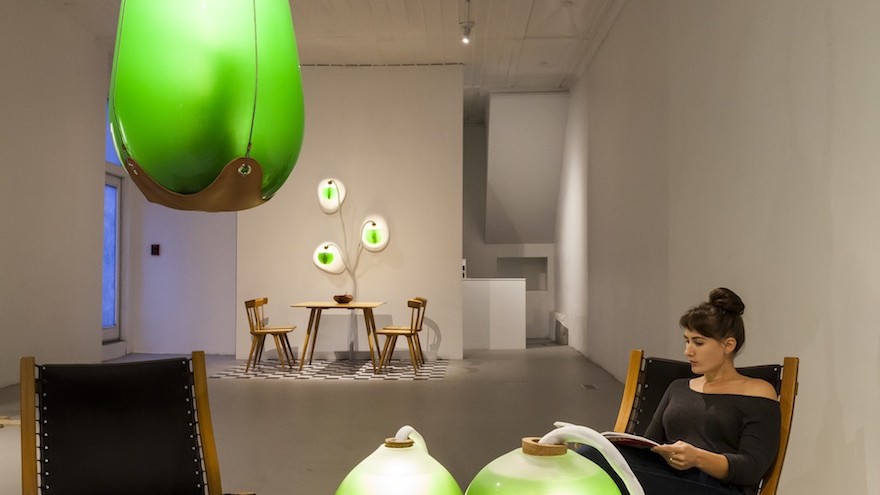Living Things, an installation by Jacob Douenias and Ethan Frier, is a vision of the furniture of the future, where microorganisms become living architecture. It questions how humans live with microorganisms: whether they should be treated as houseplants, as pets, or (as in this instance) as unique fixtures and fittings in the home.
Microalgae are amongst the most ancient and prolific of organisms on the earth, and yet humans have not fully explored the possibilities of this living substance in design and architecture. The algae live suspended in liquid - presenting a unique opportunity to a designer, who can use them like an etherial liquid material rather than a physical plant. In this fluid state, microalgae can be easily integrated into the built environment.
The benefits of using this living material within our living spaces are huge: they recycle light, carbon dioxide and heat and produce a nutrient rich, green biomass by-product, which can be consumed by humans, converted into a biofuel or used as a agricultural fertiliser.
In Living Things Spirulina algae are cultivated in custom, hand-blown glass bioreactors. Spirulina was chosen because, unlike most bacteria, it can survive in high alkaline conditions. As the algae flourishes, the character of the glass vessel changes and when the culture becomes dense enough the Spirulina can be filtered, harvested and eventually turned into a protein-rich green powder. During the course of the Living Things installation, chefs and mixologists will come up with creative dishes and drinks that feature the Spirulina powder.
Living Things is installed at The Mattress Factory, an extension of the Museum of Modern Pittsburgh, Pennsylvania, until 27 March 2016. All images by Tom Little, courtesy of The Mattress Factory.

